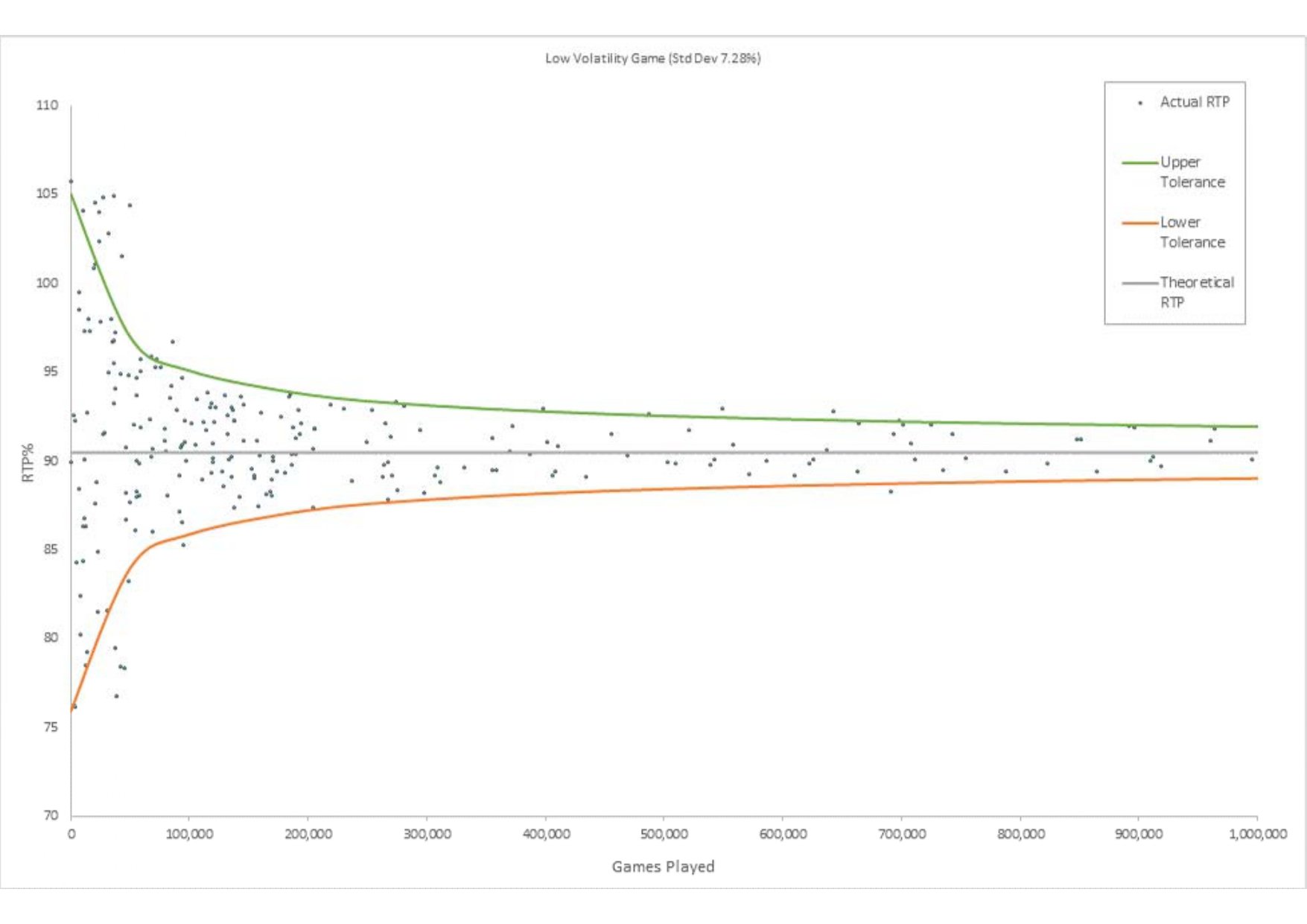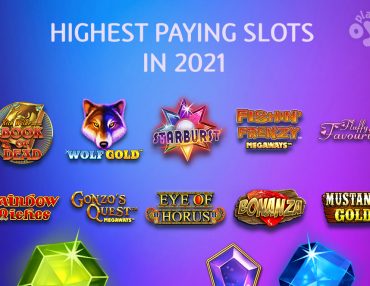In slots, RTP means Return To Player, and it is the percentage of all money wagered that is paid back out to players. It sounds fairly straightforward, but this number is probably one of the most misunderstood parts of online slots.
RTP is one of the few bits of information that providers and casinos are legally required to display in the rules of each game. It’s also one of the biggest factors in how much players spend in the long run (clue: it’s a very, very long run).
Even though most slots players have heard the term RTP, very few are aware how it actually works and how much it really matters. It’s part of a very complicated math model programmed into each slot, and that’s maybe why many of you are still asking what a slot RTP actually means.
Let’s dig into RTP and see how it works, and pick out a few high RTP slots to try while we’re at it.
When we talk about online slots or any type of game of chance, the RTP or Return To Player is how much of the money that’s wagered is returned to the players. It’s sometimes called the expected rate of return, or the payout ratio.
The definition of RTP
If you’ve heard of the ‘house edge’, then you already kind of know what RTP is too. The house edge (for example 2.70% in roulette) is what the casino keeps, and the Return To Player (97.30% in roulette) is what players get back. RTPs are always stated as percentages, and they are always less than 100%.

Rainbow Riches is one of the most famous and popular slots ever, and it has an RTP of roughly 95%, which means the house edge is 5%. Rainbow Riches should – in theory, on average, and in the long run – pay out prizes that amount to 95% of the total money it’s taken in. In the lifetime of that slot, if £50 million has been wagered, I would expect £47.5 million to have been paid back out to players.
That is a very basic answer to what RTP means in slots and all casino games powered by a random number generator. But RTP isn’t just a simple percentage that tells you what you’ll get back if you bet £1 in one spin. If we always get 95p back from a £1 spin, that would be incredibly boring and pointless. Slots are fun because they are unpredictable – sometimes you’ll get nothing, sometimes you’ll get a small win, and occasionally you may hit a big win.
The RNG or random number generator’s job is to make the game exciting but also fair. The RTP’s job is to make sure that despite all that randomness, the game still pays out what the provider intended.
Which slots have the highest RTP?
Before we get to how RTPs work in practice, let’s agree on what a good RTP is. The average slots RTP is around 96% but some go as high as 98%, others as low as 92%. Don’t forget, roulette has an RTP of 97.3% and Live Three Card Poker has a 96.63% RTP, so most slots are in the same ballpark.
Top RTP Video Slots
When it comes to RTPs, this is the Olympic podium of online slots. Except with 5 medals. Just be aware that some of these games have variable RTPs, with higher RTPs for ‘big bet’ modes, so it’s worth checking the game rules before you play. Also, RTPs can vary from casino to casino, and they can change, so be sure to check the game rules for the latest number.

Top RTP Megaways Slots
These days, if you ain’t got 117,000 paylines, you’re nobody. Here are the best payout games from the Megaways camp.

Top RTP Jackpot Slots
These games are the cream of progressive slots. Although they tend to have slightly lower RTPs, that’s the price you pay for the chance to win big.

How does RTP work in slots?
As I said earlier, you can’t expect to get 96% of your stake back on every spin. That would be extremely dull. But how many spins does it take for that 96% to kick in?
The proper definition of RTP is actually the “theoretical average return to player”, because it is an average return, in theory, over a very large number of spins. But how large?
To really understand what RTP is in slots, you need to first understand how luck (in other words randomness, powered by the game’s random number generator) affects the outcomes too. In a few spins, luck is a massive factor, which is why you can get a massive range of outcomes. In 10 spins you might get either 0% RTP (you don’t hit any wins) or 100,000% RTP (you hit the game’s 10,000x max win), or anything in between.
But the more games you play (i.e. the bigger the sample size), the closer the slot’s results will get to the actual RTP. In low volatility games like Blackjack, you may ‘only’ need to play 10,000 hands to see if a blackjack game has reliably paid out 99.48% RTP. Slots are much more volatile or unpredictable, with a much bigger range of outcomes. That means it may take 100,000 spins before random luck becomes less important, and the game’s total payout starts to match the stated RTP.
Here’s a chart from the UK Gambling Commision that shows how many spins you need to play to get an accurate RTP. Even after 100,000 spins, a game could have paid out 5% above or below the advertised RTP. To get closer to the theoretical RTP, it takes over 1 million spins, and even then, a game’s payouts may still deviate by 1% or 2%!

How to find the RTP on slots
If you want to find the RTP of an online slot, you’re in luck, because it has to be displayed somewhere in every slot. You can usually find the RTP in the game rules or help files. As you can see with Wolf Gold, the RTP is shown on page 4 of the game rules, below the payline information.
For some slots however, the RTP is a bit trickier to find, so you should look for the help or question mark icon and look near the end of the full-length game rules. If you’re starting out on your slots journeys, it’s probably wise to learn the basics of slots, including paytables and rules, before you play.

Does RTP matter?
Yes and no! An online slots RTP tells you one piece of information about the slot; How much it’s supposed to pay out on average. It can be an important number, but it depends how much you play.
Let’s say you have a choice of 2 slots, one with an RTP of 98% and another with 96%. What difference will it really make to how much you spend? In theory, if I wager £10,000 on both slots, I’d get £9,800 back on slot 1, and £9,600 back from slot 2. So, by choosing the higher RTP game, I save myself £200.
But we’ve already see that RTPs aren’t payout rates that you can rely on. There is so much luck involved in slots, and luck is a far bigger factor. Put it like this….If you only ever play 10 slot spins in your life, the RTP will make no difference at all. But if you play millions of spins over your lifetime, playing games with higher RTPs will mean you get more play for your money.
What the RTP doesn’t tell you is anything about the gambling experience. Two games of chance can both have a 97.83% RTP but very different feel to play. It’s good to care about getting the best value for money, but it’s factors like hit rate, volatility and of course the slot’s design, that have more say in your play, and determine if you’ll enjoy playing the game or not.
So hunt out the best RTP slots by all means, but don’t expect it to have a noticeable impact on your experience or bankroll. It’s probably more important to find online slots with the kind of payout model that suits your style.
How PlayOJO boosts every slot’s RTP
I think I’ve mentioned RTP around 87 times by now, so it’s time to stop. But before you go, here’s an important return-boosting perk that PlayOJO offers on all online slots and table games – it’s called OJOplus.
Because you get money back on every slot with no strings attached, the actual return you get is better than the RTP alone, which essentially means you get the UK’s best RTP slots.
A slot with an RTP of 96.4% could actually return something like 97%, once you factor in the OJOplus cashback. But the good thing about OJOplus is that there’s zero variance. You won’t have to wait 1 million spins to get the correct return. You get your OJOplus return after every spin, without fail.
Summary
Thanks for being patient with me as I’ve taken you down my RTP rabbit hole and shared my love of gambling math. I hope you’ve picked up some useful slot tips and tricks about how online slots pay out, and you now understand how RTP works in slots. If you’re an experienced or regular player who plays hundreds of thousands of spins over one or more years, then RTP may be worth taking into account. But for most players, the difference between 96% and 97% really isn’t something I would worry too much about, as your results will be driven much more by randomness.
Have fun and play safe!
FAQ
Because the average slots RTP is around 96%, anything above 96% is seen by players as a good or high RTP. Don’t expect to find a slot with an RTP of 99%, though. The normal range for high RTP slots is 97% and very occasionally 98%.
The RTP in roulette is 97.30%, and in blackjack it can be as high as 99.50%. Table games often have higher return to player amounts than online slots, though some like Craps have specific bet types with much lower RTPs. In general, however, casino games have slightly better payout percentages than slots, probably because slots are much more volatile and can pay out huge sums.
In online slots, the RTP is decided by the slots provider, like Games Global for example, and then programmed into the slot’s software code. RTP is just one part of an extremely complex set of rules in a slot’s software that decide how winnings should be paid out.
In the UK, slots should be checked regularly to ensure they are paying out what they should do. In this article from the British gambling regulator, the UK Gambling Commission says that casinos should monitor their games to ensure the payouts are fair. In other words, that they’re paying out roughly according to the stated RTP, and certainly not significantly less than they’re supposed to. This live monitoring of RTP is done by taking a big enough sample of slot spins and dividing the total won by the total wagered. This gives them the actual RTP which they can then compare to the programmed theoretical percentage. Interestingly, they also talk about how different bonus features within a slot can have their own RTP, so it’s not always helpful to look at a game’s overall RTP. A 50/50 gamble feature may have a 95% RTP, the base game can have a 97% RTP and the progressive jackpot its own RTP, too. If you want to go even deeper into the world of RTP, variance, standard deviation and other gambling math theory, Wikipedia has got your back.
RTP is just one of many factors that determine when slots pay out, and the size of each prize. Every slot is programmed with a hit rate (how often a win is awarded e.g. 1 win at slots every 3.28 spins on average) and volatility, which serve a different purpose to the RTP or Return To Player. Volatility basically decides if your slot pays out infrequent big wins or regular small wins, or somewhere in between. Low volatility slots pay out small wins very often. High volatility slots pay out very rarely, and mostly bigger wins. Most slots have medium volatility with a balance of win frequencies and sizes.

















